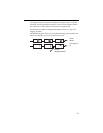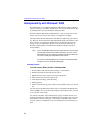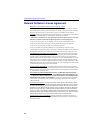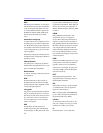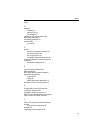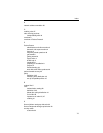
Intel® Packet Protect User’s Guide
72
works or applications communicate. If the
set of rules are followed, information can
be processed correctly. This allows com-
puters and hardware devices to communi-
cate with one another even if they’re
different from one another.
rule
A definition of the security settings to
apply when a computer communicates
with a destination computer using a speci-
fied protocol.
secure initiator
A description of a default behavior for a
computer that uses Packet Protect. A
Secure Initiator computer initiates com-
munications by requesting security and
responds to communication requests with-
out security (“in the clear”). A common
use for this setting is a server that doesn’t
require the strict control of the Lockdown
setting.
secure responder
A description of a default behavior for a
computer that uses Packet Protect. A
Secure Responder computer initiates com-
munications without security (“in the
clear”), but can respond to communication
requests with security. A common use for
this setting is a workstation.
security action
A collection of IPSec settings that are pro-
posed when two computers attempt to
communicate. Packet Protect uses security
actions when a rule is matched for a com-
munication.
security association
A security contract between two comput-
ers. While the security association is
active (8 hours is the default), the two
computers can send data without re-nego-
tiating a communication (as long as the
data being sent uses a protocol defined in
the existing security association).
security association lifetime
The duration of a security association. A
lifetime can be limited by time or by the
amount of data transmitted.
SHA-1
Secure Hash Algorithm. An algorithm
often used to verify the integrity of pack-
ets traveling on a network. The algorithm
transforms any number of bytes into a
fixed number of bytes.
traffic
Packets traveling on the network.
workgroup
A logical collection of computers (servers
and clients) that you define in Packet Pro-
tect.
Workgroups in Packet Protect are different
from workgroups in Windows operating
systems.



